Highly Integrated Ka-Band Multi-Beam Network Design Based on a Low-Cost Multi-Layer Printed Circuit Board
Abstract
:1. Introduction
2. Proposed Design of the Multi-Beam Network
2.1. Architecture of the Multi-Beam Phased Array Antenna
2.2. Multi-Beam Network Design Based on Multilayer PCB Stack-Up
2.3. Multi-Beam Network Simulation Optimization
3. Fabricated Prototype and Measured Results
4. Conclusions
Author Contributions
Funding
Data Availability Statement
Conflicts of Interest
References
- Lambard, T.; Lafond, O.; Himdi, M.; Jeuland, H.; Bolioli, S.; Le Coq, L. Ka-band phased array antenna for high-data-rate SATCOM. IEEE Antennas Wirel. Propag. Lett. 2012, 11, 256–259. [Google Scholar] [CrossRef]
- Portillo, I.D.; Cameron, B.G.; Crawley, F. A technical comparison of three low earth orbit satellite constellation systems to provide global broadband. Acta Astronaut. 2019, 159, 123–135. [Google Scholar] [CrossRef]
- Lee, K.M.; Edie, J.; Krueger, R.; Weber, J.; Brott, T.; Craig, W. A low profile X-band active phased array for submarine satellite communications. In Proceedings of the IEEE International Conference on Phased Array Systems and Technology, Dana Point, CA, USA, 21–25 May 2000; pp. 231–234. [Google Scholar]
- You, D.; Takahashi, Y.; Takeda, S.; Moritani, M.; Hagiwara, H.; Koike, S.; Lee, H.; Wang, Y.; Li, Z.; Pang, J.; et al. A Ka-Band 16-Element Deployable Active Phased Array Transmitter for Satellite Communication. In Proceedings of the 2021 IEEE/MTT -S International Microwave Symposium (IMS), Virtual Event, 20–25 June 2021; pp. 799–802. [Google Scholar]
- Abdel-Wahab, W.M.; Al-Saedi, H.; Alian, E.H.M.; Raeis-Zadeh, M.; Ehsandar, A.; Palizban, A.; Ghafarian, N.; Chen, G.; Gharaee, H.; Nezhad-Ahmadi, M.R.; et al. A Modular Architecture for Wide Scan Angle Phased Array Antenna for K/Ka Mobile SATCOM. In Proceedings of the 2019 IEEE MTT-S International Microwave Symposium (IMS), Boston, MA, USA, 2–7 June 2019; pp. 1076–1079. [Google Scholar]
- Navarro, J.A. Heterogeneously- Integrated Phased-Array Antennas for Line—of—Sight (LOS) Communications and Sensor Applications. In Proceedings of the 2018 IEEE/MTT-S International Microwave Symposium (IMS), Philadelphia, PA, USA, 10–15 June 2018; pp. 776–778. [Google Scholar]
- Navarro, J. Affordable, Multi-Function Flight-Worthy Airborne Phased-Array Sensor. In Proceedings of the 2020 IEEE/MTT -S International Microwave Symposium (IMS), Los Angeles, CA, USA, 4 August–30 September 2020; pp. 829–832. [Google Scholar]
- Aljuhani, A.H.; Kanar, T.; Zihir, S.; Rebeiz, G.M. A scalable dual-polarized 256-element ku-band phased-array SATCOM receiver with ±70° beam scanning. In Proceedings of the IEEE MTT-S International Microwave Symposium Digest, Philadelphia, PA, USA, 10–15 June 2018; pp. 1203–1206. [Google Scholar]
- Low, K.K.W.; Nafe, A.; Zihir, S.; Kanar, T.; Rebeiz, G.M. A scalable circularly-polarized 256-element ka-band phased-array SATCOM trans-mitter with ±60° beam scanning and 34. 5 dBW EIRP. In Proceedings of the EEE MTT-S International Microwave Symposium Digest, Boston, MA, USA, 2–6 June 2019; pp. 1064–1067. [Google Scholar]
- Low, K.K.W.; Zihir, S.; Kanar, T.; Rebeiz, G.M. A Scalable Switchable Dual-Polarized 256-Element Ka-Band SATCOM Transmit Phased-Array with Embedded RF Driver and ±70° Beam Scanning. In Proceedings of the 2020 IEEE/MTT-S International Microwave Symposium (IMS), virtual event, 12–14 October 2020; pp. 821–824. [Google Scholar]
- Kassner, J.; Kulke, R.; Uhlig, P.; Rittweger, M.; Waldow, P. Highly Integrated Power Distribution Networks on Multilayer LTCC for Ka-band Multiple-Beam Phased Array Antennas. In Proceedings of the IEEE MTT-S CDROM, Seattle, WA, USA, 2–7 June 2002; pp. 51–54. [Google Scholar]
- Butz, J.; Spinnler, M.; Christ, J.; Mahr, U. Highly integrated RF-modules for Ka-band multiple-beam active phased array antennas. In Proceedings of the IEEE MTT-S CDROM, Seattle, WA, USA, 2–7 June 2002; pp. 61–64. [Google Scholar]
- Nafe, A.; Sayginer, M.; Kibaroglu, K.; Rebeiz, G.M. 2 × 64 Dual-Polarized Dual-Beam Single-Aperture 28 GHz Phased Array with High Cross-Polarization Rejection for 5G Polarization MIMO. In Proceedings of the 2019 IEEE MTT-S International Microwave Symposium (IMS), Boston, MA, USA, 2–6 June 2019; pp. 484–487. [Google Scholar]
- Nafe, A.; Sayginer, M.; Kibaroglu, K.; Rebeiz, G.M. 2 × 64-element dual-polarized dual-beam single-aperture 28-GHz phased array with 2 × 30 Gb/s links for 5G polarization MIMO. IEEE Trans. Microw. Theory Technol. 2020, 68, 3872–3884. [Google Scholar] [CrossRef]

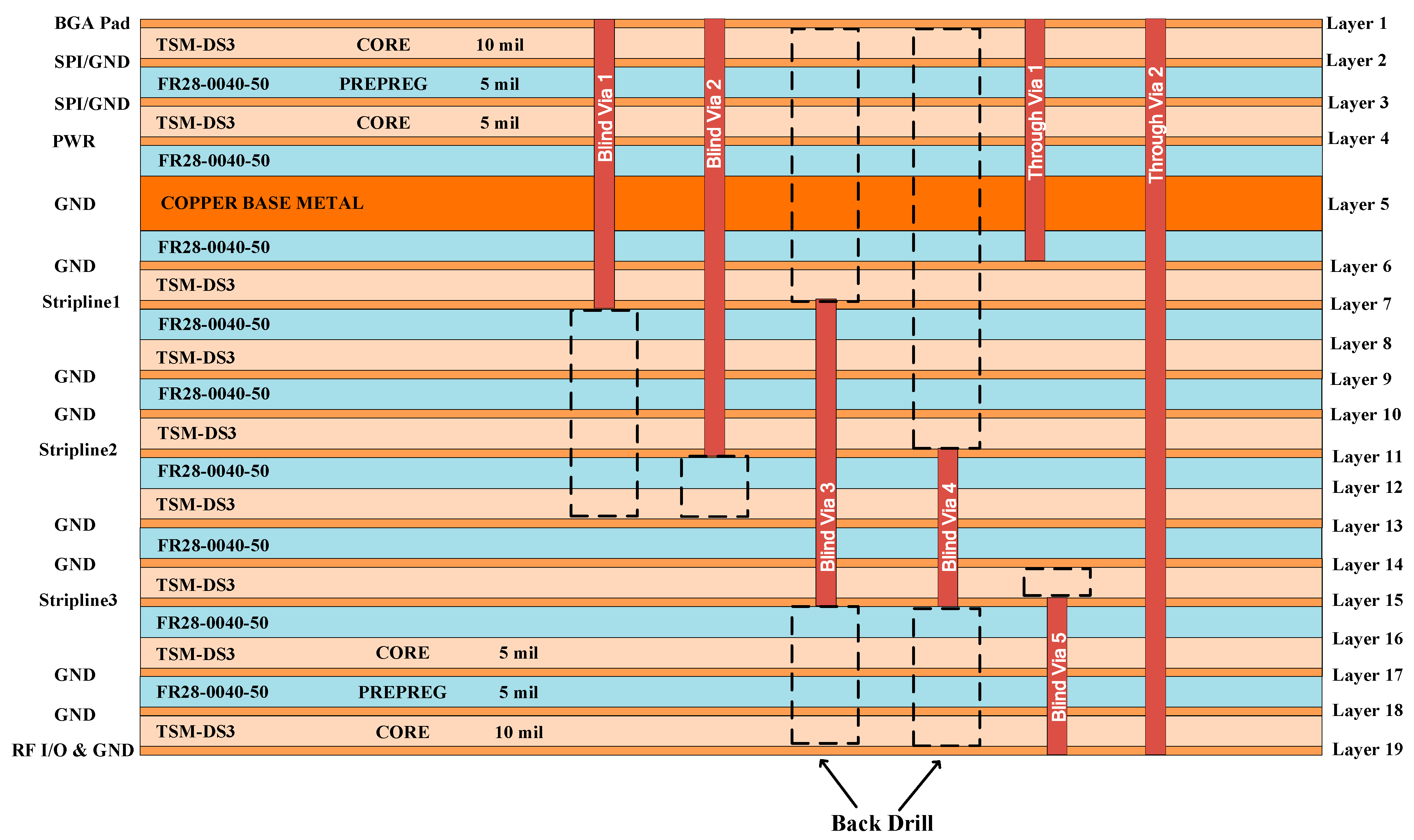

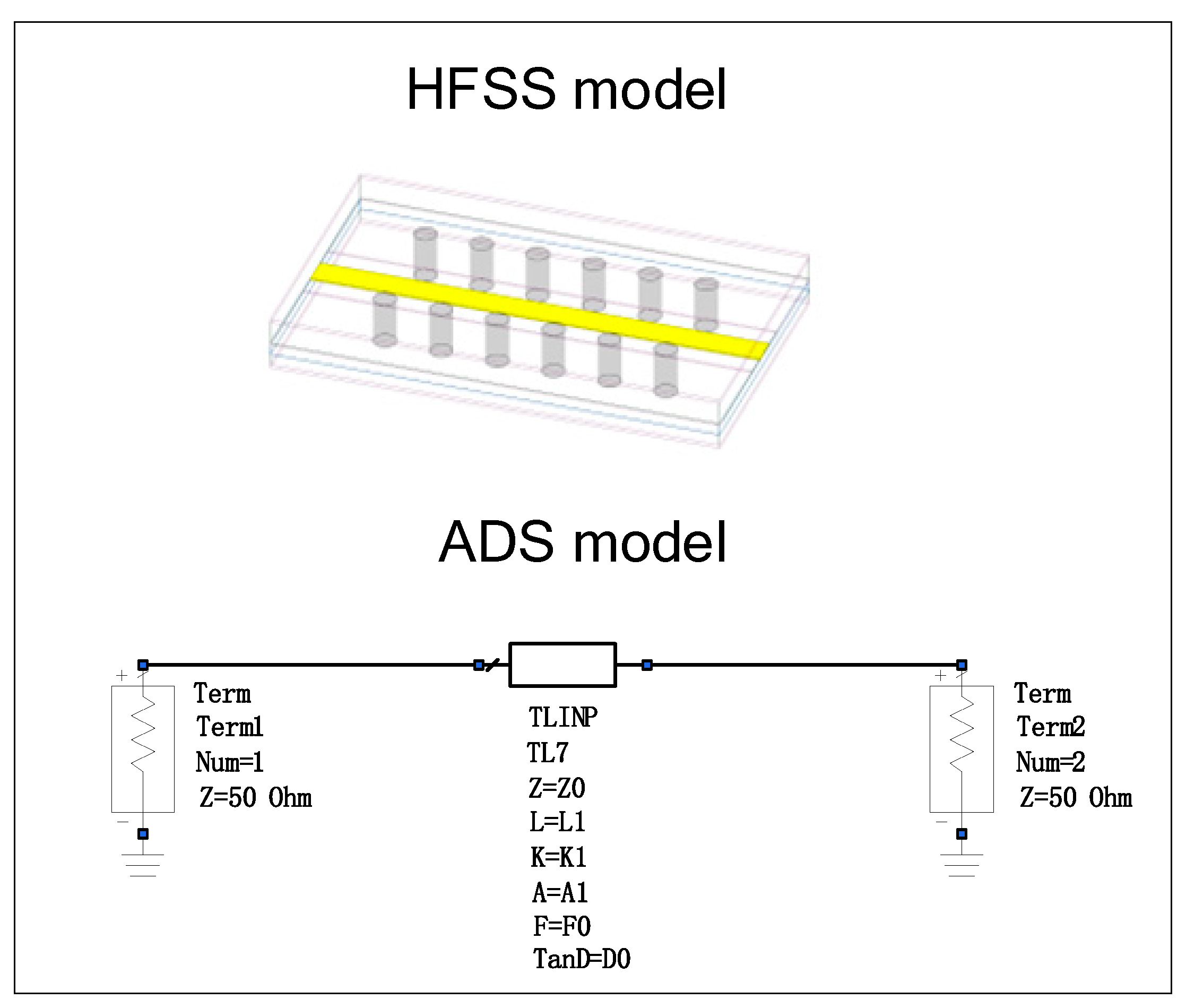
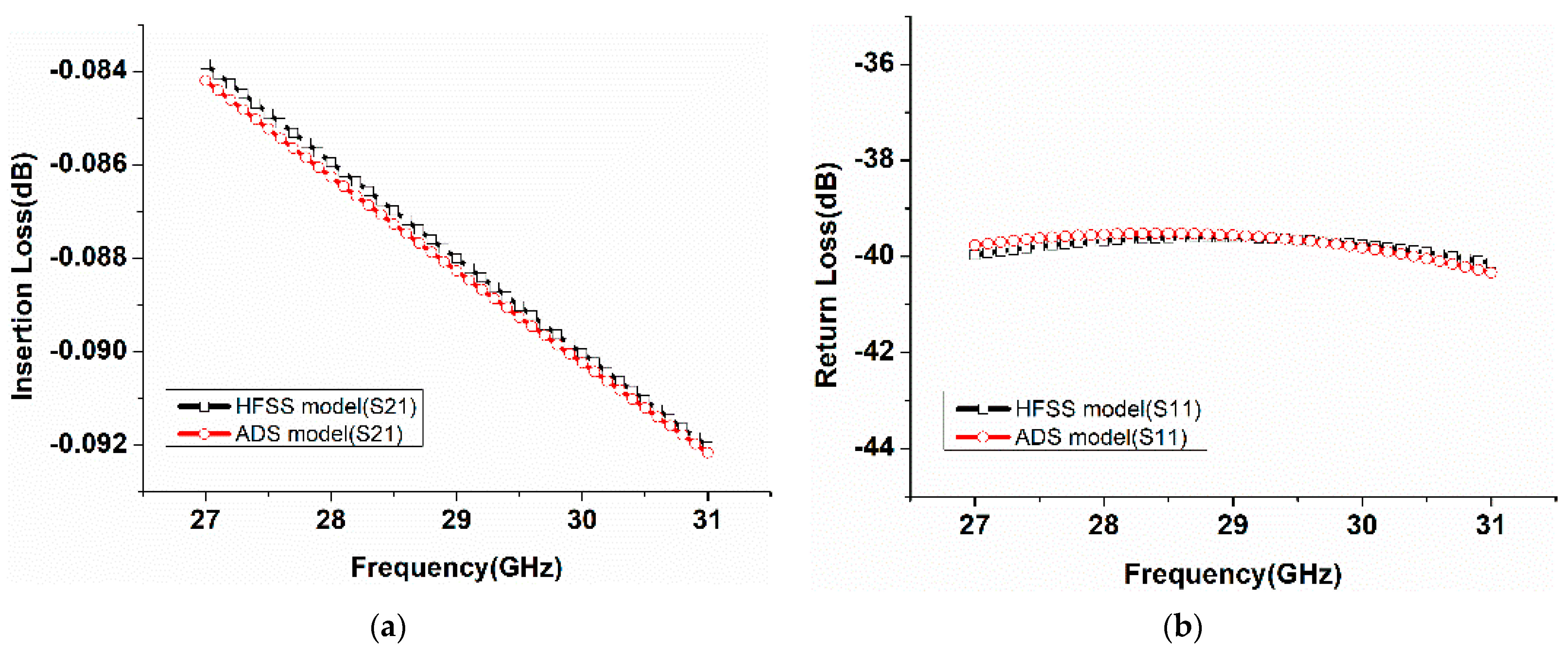
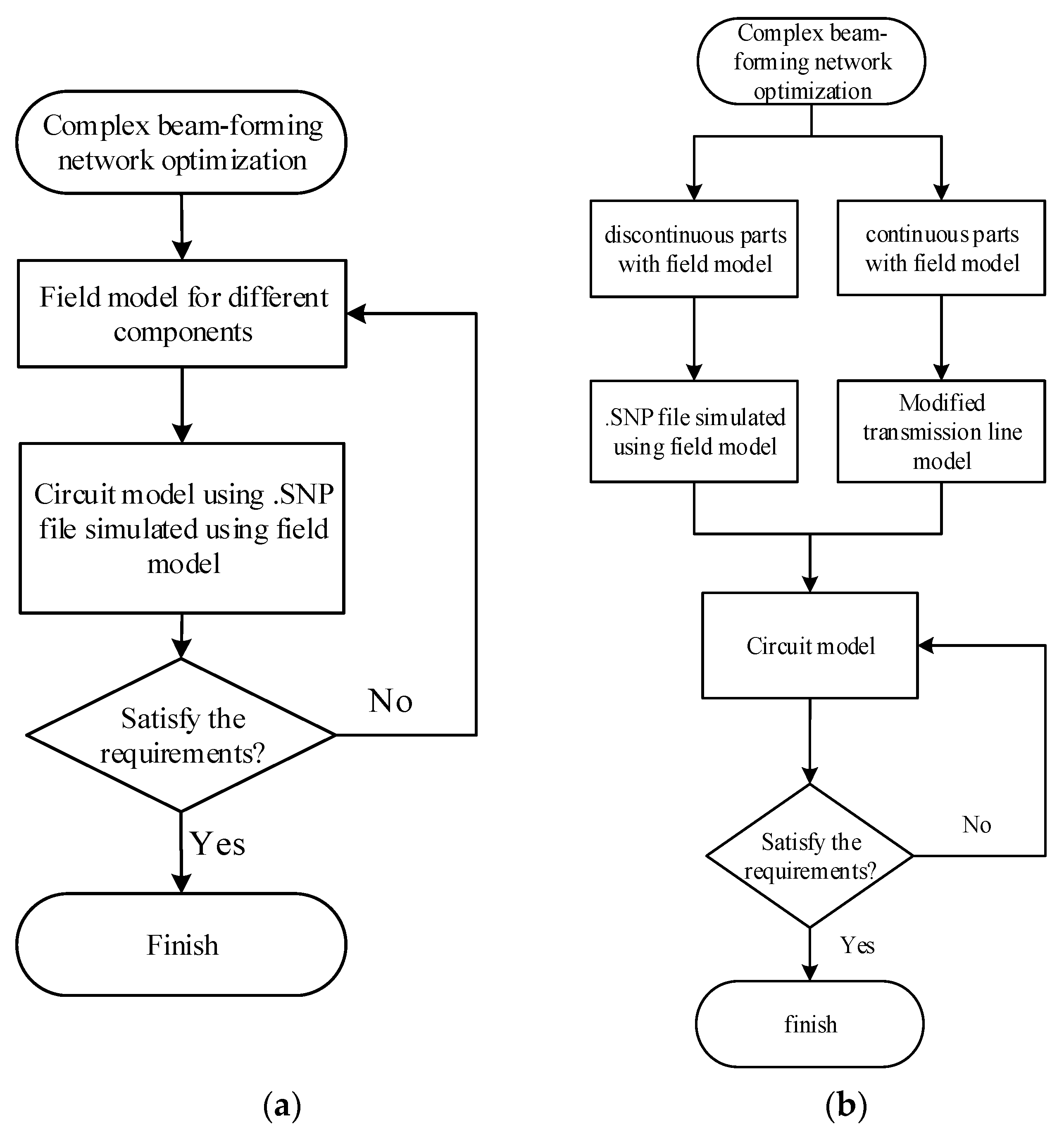
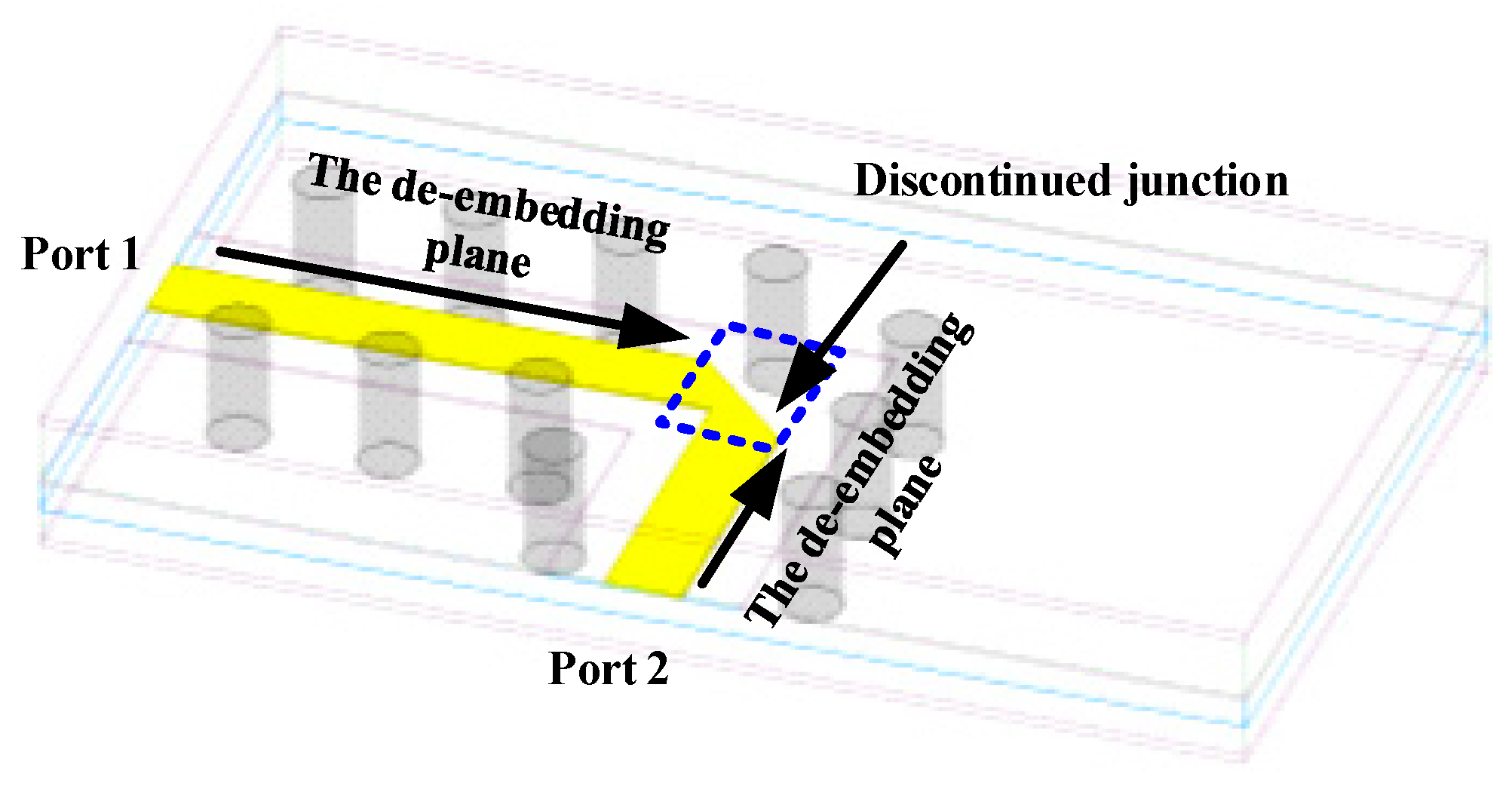


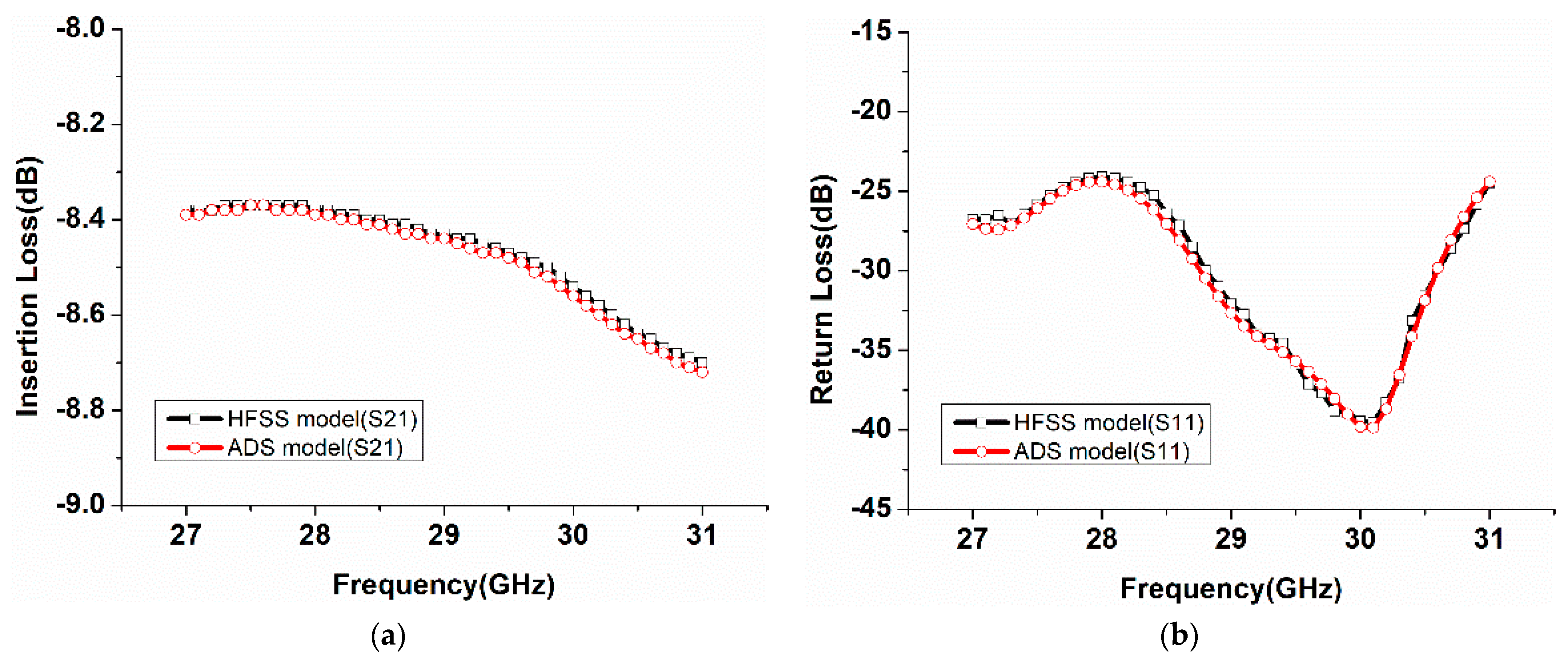
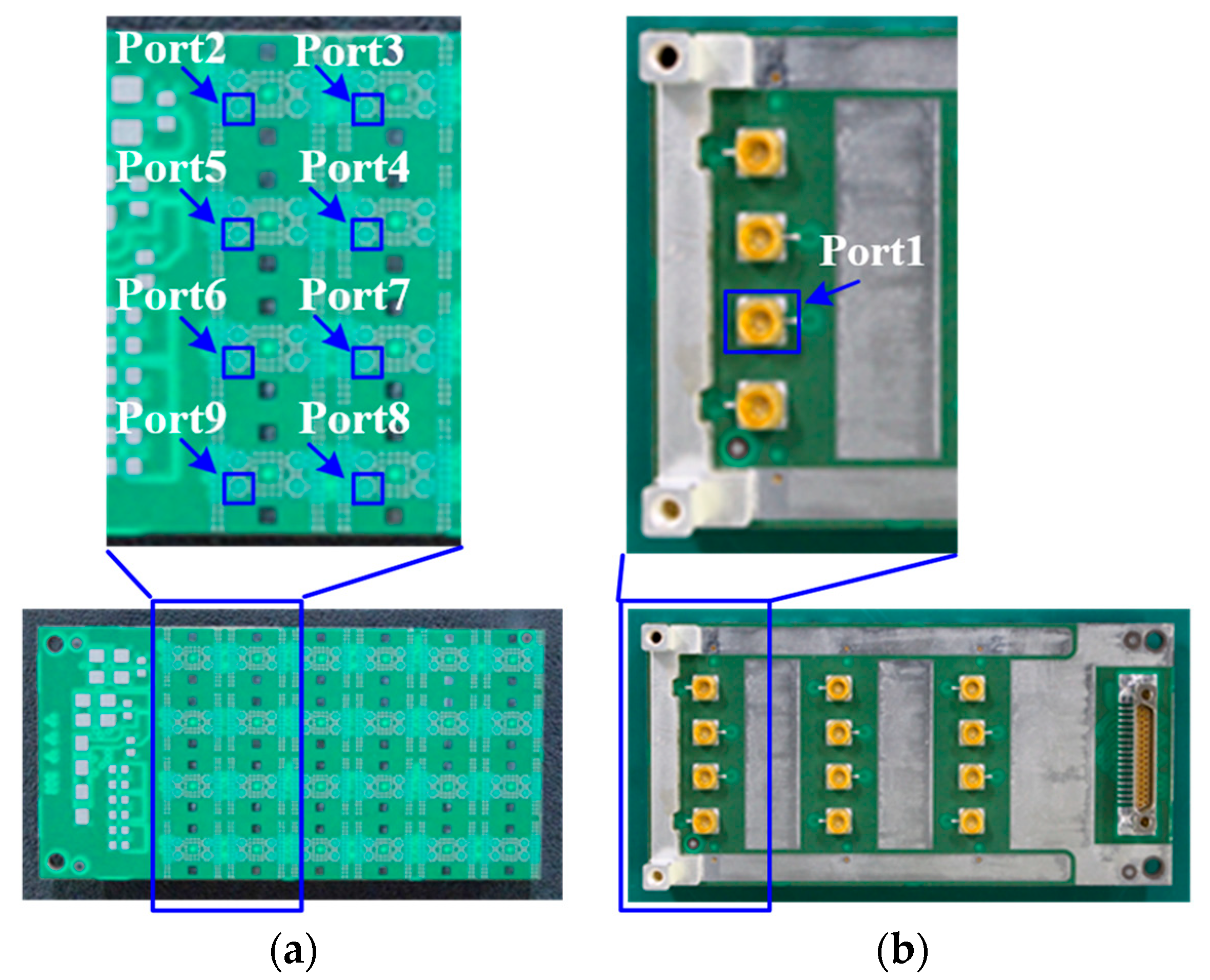

| Item | Port Numbers | Computer Memory | Simulation Time |
|---|---|---|---|
| 3D full-wave method | 9 | 128 G | 8 h |
| Field-circuit method | 9 | 32 G | 1 h |
| Refs | Operation Frequency (GHz) | Beam Numbers | Package Material | Gain Imbalance (dB) | Phase Imbalance (Deg) | Weight | Cost |
|---|---|---|---|---|---|---|---|
| [7] | 15–18 | 2 | PCB | - | - | light | low |
| [9] | 27–31 | 1 | PCB | - | - | light | low |
| [11] | 17–21 | 2 | LTCC | 0.6 | 30 | heavy | high |
| [14] | 28–32 | 2 | PCB | 1 | - | light | low |
| This work | 27–31 | 4 | PCB | 0.5 | 6 | light | low |
Disclaimer/Publisher’s Note: The statements, opinions and data contained in all publications are solely those of the individual author(s) and contributor(s) and not of MDPI and/or the editor(s). MDPI and/or the editor(s) disclaim responsibility for any injury to people or property resulting from any ideas, methods, instructions or products referred to in the content. |
© 2023 by the authors. Licensee MDPI, Basel, Switzerland. This article is an open access article distributed under the terms and conditions of the Creative Commons Attribution (CC BY) license (https://creativecommons.org/licenses/by/4.0/).
Share and Cite
Zhang, X.Y.; Yang, J.; Zhang, B.; Li, Y.; Li, R.X.; Qin, X.R.; Long, M. Highly Integrated Ka-Band Multi-Beam Network Design Based on a Low-Cost Multi-Layer Printed Circuit Board. Electronics 2023, 12, 2877. https://doi.org/10.3390/electronics12132877
Zhang XY, Yang J, Zhang B, Li Y, Li RX, Qin XR, Long M. Highly Integrated Ka-Band Multi-Beam Network Design Based on a Low-Cost Multi-Layer Printed Circuit Board. Electronics. 2023; 12(13):2877. https://doi.org/10.3390/electronics12132877
Chicago/Turabian StyleZhang, Xiao Yang, Jun Yang, Bo Zhang, Yan Li, Ruo Xin Li, Xu Rong Qin, and Mao Long. 2023. "Highly Integrated Ka-Band Multi-Beam Network Design Based on a Low-Cost Multi-Layer Printed Circuit Board" Electronics 12, no. 13: 2877. https://doi.org/10.3390/electronics12132877
APA StyleZhang, X. Y., Yang, J., Zhang, B., Li, Y., Li, R. X., Qin, X. R., & Long, M. (2023). Highly Integrated Ka-Band Multi-Beam Network Design Based on a Low-Cost Multi-Layer Printed Circuit Board. Electronics, 12(13), 2877. https://doi.org/10.3390/electronics12132877







